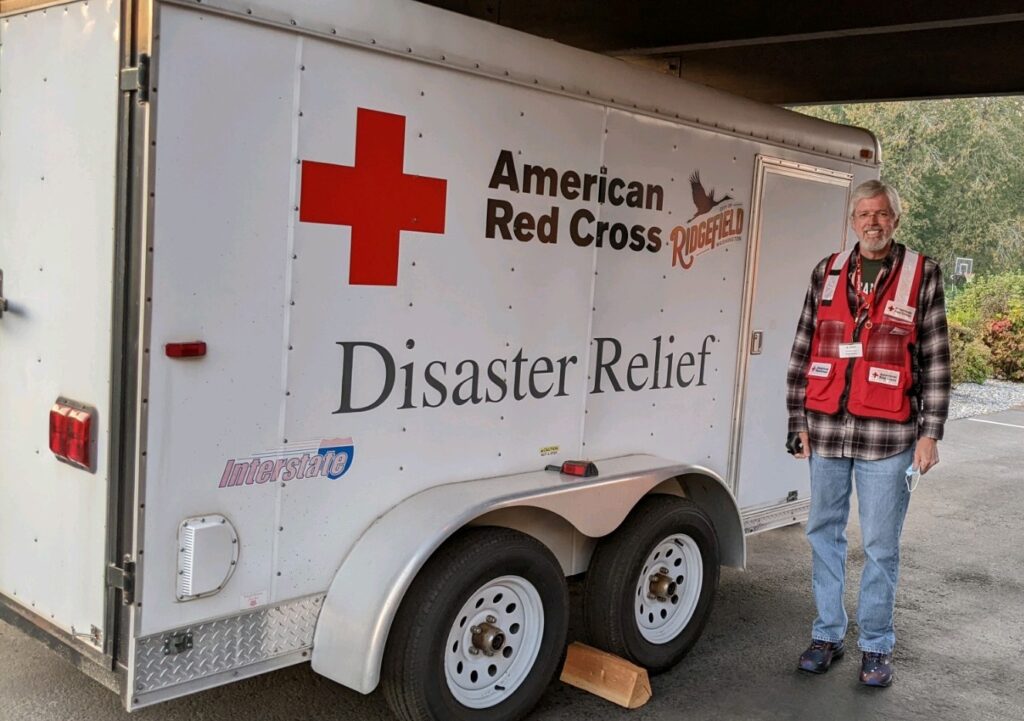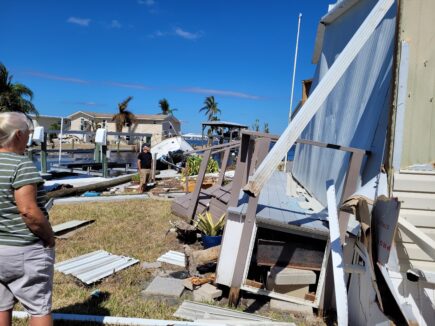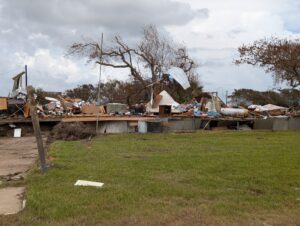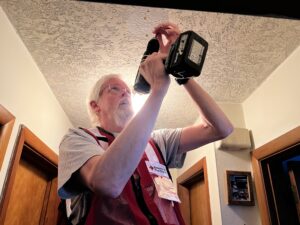Retired High-Tech Engineer Finds Purpose Helping People Recover from Disasters
By Patricia Griffiths, Red Cross Volunteer

This summer, thousands of Red Cross volunteers across the country, like Terry Nefcy, packed a suitcase and traveled to different states to support people diplaced by disaters. It’s just one of many things he’s done for the Red Cross since retiring in 2019.
“What can I do to be useful?” was the pivotal question Nefcy, a retired high-tech executive, asked himself after leaving his career in Hillsboro, Oregon. For him, the answer was immediate: “I liked the mission of the Red Cross.”
He started in 2021 by helping people who had experienced home fires (the Red Cross is a second-responder, arriving on the scene just after the fire, medical, and police first-responders). Motivated by the needs of these disaster survivors, he jumped in right away and clocked in about 200 home fires, volunteering more than 500 hours his first year.
He recalled that his greatest challenges were the poignant moments when people lost loved ones or pets in the fires. Although the Red Cross meets the immediate needs of people who have lost their homes, Nefcy filled another gap.
“I started giving teddy bears to adults who’ve lost pets,” he said. The Red Cross already gives teddy bears to children who have experienced loss, but he found out that adults appreciated the warm gesture as well.
Returning to his pivotal question, he asked how he could by useful by applying his tech expertise to disaster situations. The answer led him to Florida in 2022, in the aftermath of Hurricane Ian, a category 5 storm. Hurricane Ian had decimated much of the vital infrastructure in the affected areas. To support the Red Cross teams providing disaster recovery, he set up communications systems using tablets. That experience launched another new Red Cross career path for him.

“I try to take vacations around hurricane season,” he said, in order to follow the storms rather than avoid them.
His next storm was Hurricane Adelia in the fall of 2023. To further augment his usefulness, he utilized the Red Cross training to qualify for “hot-shot damage assessment.” That involves going to an area that has been struck by disaster and doing a rigorous assessment of the degree of damage a home incurred. If a home is deemed to be totally destroyed, for example, the Red Cross will provide lodging and other support for the residents. The Red Cross damage assessments are considered so reliable that FEMA uses that assessment data.

More recently, he was deployed to Houston, Texas in 2024 for Hurricane Beryl to conduct damage assessment. “We went to Sargent, Texas in heat and high humidity, and we decided if a home’s damage is major or if it’s minor. We have an app on our phones and enter data into it. We checked every home.” Red Cross volunteers came from all over the country, working in pairs. There were a total of 50 volunteers assessing every home for about a 100-mile circumference around Houston. Although the extent of the damage was so extensive that the Red Cross sheltered 4,000 people with nearly 2 million lacking power, the people Nefcy met were very helpful and friendly. Many of them referred the team to neighbors that they thought had been especially hard hit.
In the hurricane off-season, Nefcy helps in other ways. He qualified through the Red Cross to drive trucks with meals for disaster-struck areas, transport blood donations from donation centers to Red Cross processing centers and then onto hospitals. He also drives trucks that were borrowed from one area to provide disaster support in another area, and just recently returned a truck from Houston, Texas to Chattanooga, Tennessee. Closer to home, he volunteers for the home fire safety campaign, installing smoke detectors.

He still attends home fires as a second responder. And, of course, he still hands out teddy bears.
Looking back on the decision he made to join the Red Cross, he said, “The Red Cross has nice, compassionate people and a lot of volunteers who like what they are doing. I like that the organization likes you and wants you to help with problems. That makes you feel great!”